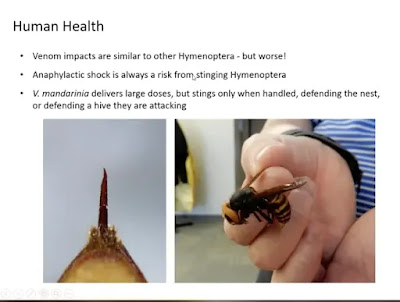What are 'Murder Hornets' and should I be worried? Asian giant hornets spotted in the US
An invasive hornet species slaughters honeybees, can be deadly to humans and –unfortunately – has been spotted in the United States.
A small number of Asian giant hornet sightings in the Pacific Northwest has raised alarm after a nickname for the predators started trending on Twitter Saturday: "Murder Hornet." While experts have been tracking the invasive species in the U.S. for months, a New York Times feature published Saturday brought nickname to the national consciousness.
It's a fittingly upsetting nickname, based on a lengthy March presentation from Washington State Department of Agriculture entomologist Chris Looney. It opened with a slide listing other ominous titles for the the largest hornet in the world: "yak killer hornet" and "giant sparrow bee" among them.
This spring, the Washington state Department of Agriculture started hunting for Asian giant hornets after two confirmed sightings of the predator.
And while officials are concerned, especially for local honeybee populations, the danger to the average person is low at this time Looney, confirmed to USA TODAY Saturday.
The hornets are "probably not going to murder someone ... don’t panic," Looney said.
Sightings have been limited to the Pacific Northwest, although the smaller European hornet is sometimes mistaken for the Asian giant hornet on the East Coast.
For humans unfortunate enough come in contact with an Asian giant hornet, Looney had simple advice in his March presentation: "Just run away."
The predators kill between 40 and 50 people annually in Japan – many victims suffer from allergies, but some have died from the potency of the venom alone, he said.
Rare complications can include localized necrosis, respiratory failure, kidney failure, liver damage and blood clots.
But the more immediate danger in the United States is to an already vulnerable honeybee population.
Looney described a lifecycle where Asian giant hornets attack individual honeybees in the early summer – turning prey into a "meatball" to feed to hornet larvae. Soon, the hornets abandon this "hunting phase" in favor of the “slaughter phase” – the wholesale killing of bee colonies so the hornets can plunder their hives.
Efforts to contain the spread of the hornets, which prey on virtually any insect in addition to honeybees, have been ramping up in recent weeks, Looney said Saturday.
One thing local residents can do to help: Report suspected sightings to the Washington State Department of Agriculture.
Contributing: The Associated Press


